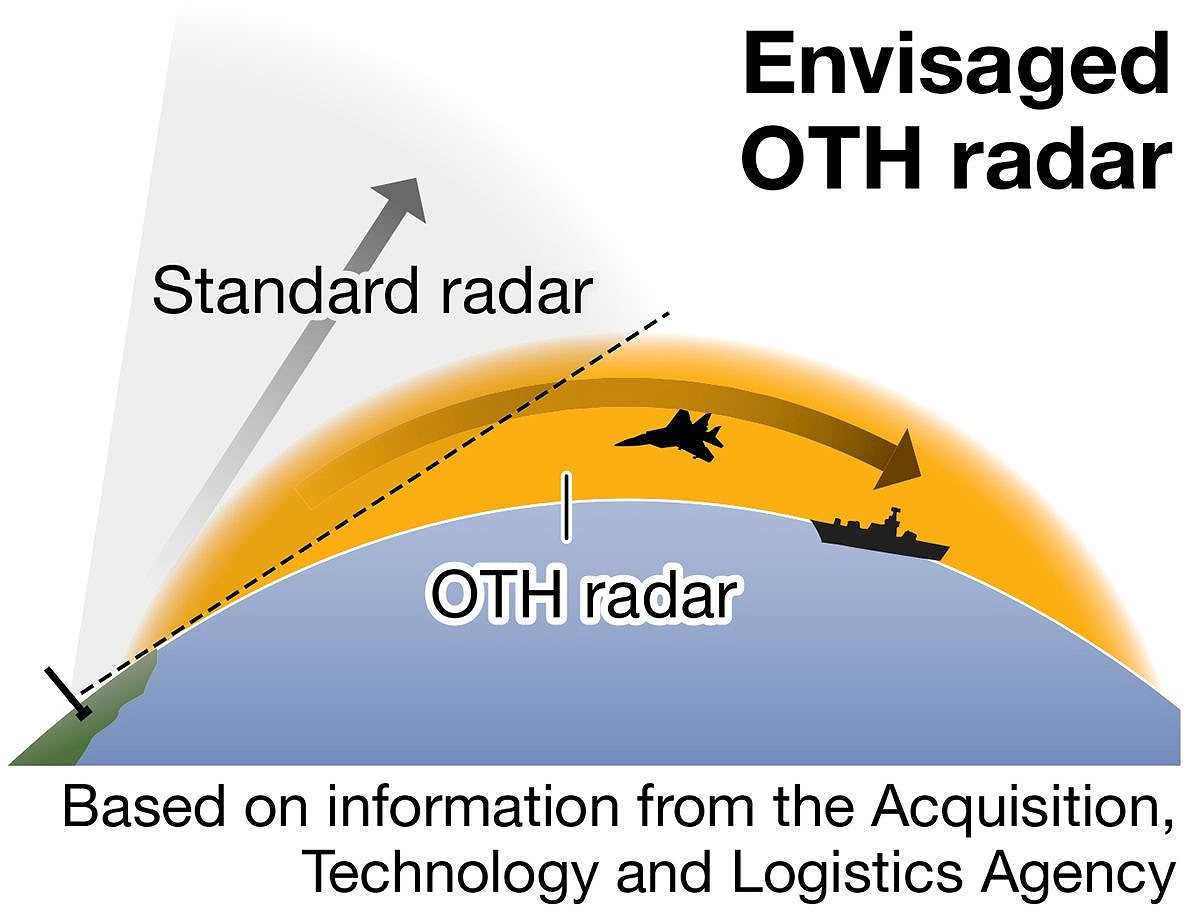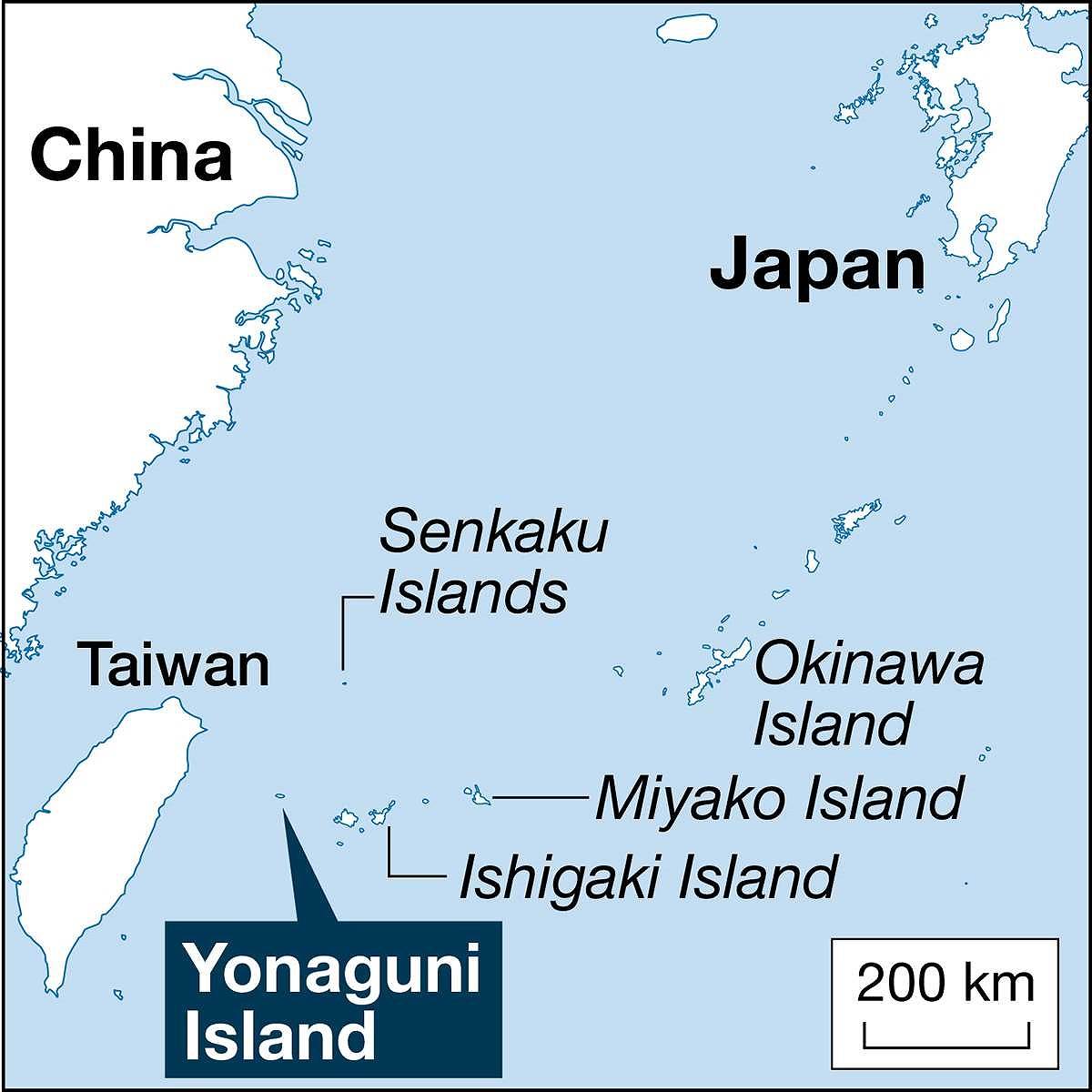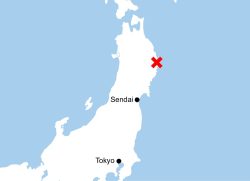Japan Plans to Develop New Radar System to Monitor Beyond Horizon; Govt Eyes Radar Use Around Yonaguni Island to Monitor Chinese Vessels

16:58 JST, July 6, 2024

The government plans to accelerate research on the development an over-the-horizon (OTH) radar that can detect targets at ranges beyond the capabilities of standard radar.
The radio waves emitted by radar currently used by the Self-Defense Forces cannot reach beyond the horizon. The Acquisition, Technology and Logistics Agency will begin manufacturing a prototype device for practical use on Okinawa Prefecture’s Yonaguni Island, Japan’s westernmost island, by the end of this fiscal year with China in mind.
The government hopes to increase its vigilance and surveillance capabilities amid China’s increasingly active military activities around Japan. The agency plans to have the radar available for use in fiscal 2029 or later.
According to the agency, the microwaves emitted by the radars normally used by the SDF travel in almost a straight line and cannot detect objects near the Earth’s surface due to the curvature of the planet, and as a result, cannot detect naval vessels or aircraft flying at low altitudes.
The distance that an SDF radar can detect targets depends on where it is installed. If the radar is set at a height of 50 meters above sea level, the horizon, or vanishing point, would be about 30 kilometers away.
In comparison, the shortwaves emitted by an OTH radar can travel along the curvature of the Earth, in addition to traveling in almost a straight line, extending its monitoring range for hundreds of kilometers beyond the horizon.
If the system is put into practical use on Yonaguni Island, it will allow naval vessels sailing around the Senkaku Islands to be surveilled from about 150 kilometers away.
The advantages of using an OTH radar is that it has low operating costs and can continuously monitor a large area.
The agency had been researching OTH radars since fiscal 2014 at a test site on the Shimokita Peninsula in Aomori Prefecture and other locations. As of fiscal 2023, the agency had invested about ¥13 billion to improve its accuracy. The radar is now capable of detecting aircraft flying at an altitude of several hundred meters at a speed of about Mach 1, as well as naval vessels, several hundred kilometers away.
The agency’s Future Capabilities Development Center plans to begin designing new research equipment on Yonaguni Island this fiscal year by renovating the radar facility it took over from the Tokyo-based National Institute of Information and Communications Technology.
However, some of the challenges include downsizing the prototype, which is expected to be about 500 meters long and five meters wide, and improving its accuracy. The agency will continue research and development of the radar over the next four years.
The SDF uses aircraft and satellites to monitor maritime airspace around Japan, but it cannot continuously monitor all areas. The agency believes it is necessary to strengthen its surveillance through the use of various equipment. such as the OTH radar. It has been reported that China has installed a similar radar.
"Politics" POPULAR ARTICLE
-

Japan to Support Central Asian Logistics Route That Bypasses Russia, Plan to Be Part of Upcoming Summit in Tokyo
-

Japanese Language Requirement Eyed for Permanent Residency Status; LDP Plans Revisions of Laws on Foreigners
-
-250x167.jpg)
Japan Eyes Plan to Accept Up To 1.23 Mil. Foreign Workers by End of Fiscal 2028
-

AI-Driven ‘Zero Clicks’ Phenomenon Threatens Democracy; News Outlets Must Be Able to Recover Costs, Stay Independent
-

Japanese Public, Private Sectors to Partner on ¥3 Tril. Project to Develop Domestic AI, SoftBank to Be Key Firm Involved
JN ACCESS RANKING
-

As Chinese Tourists Shun Japan, Hotels and Stores Suffer
-

Osaka-Kansai Expo’s Economic Impact Estimated at ¥3.6 Trillion, Takes Actual Visitor Numbers into Account
-

Japan Govt Adopts Measures to Curb Mega Solar Power Plant Projects Amid Environmental Concerns
-

BOJ Gov. Ueda: Highly Likely Mechanism for Rising Wages, Prices Will Be Maintained
-

Economic Security Panels Debate Supply Chains, Rare Earths; Participants Emphasize Importance of Cooperation Among Allies























